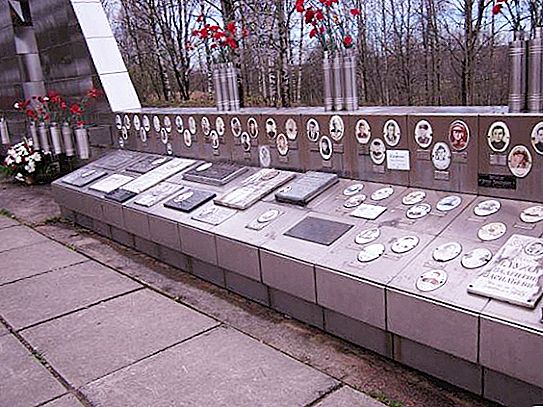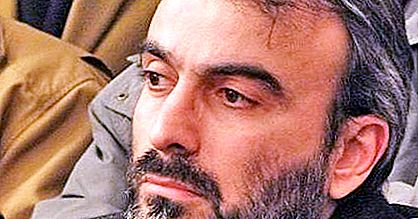War is a terrible, creepy word. This is heavy back-breaking labor in the rear, and bloody battles at the front. This is the joy of the long-awaited short little news from the front, and the grief of the funeral received. At the word “war”, many of us immediately have pictures of the terrible battles of the Great Patriotic War. A special place among them is the heroic defense of Leningrad. Residents of the city, caught in the enemy’s ring, for 900 days overcame the terrible cold in winter, constant hunger and ongoing bombing. The courage and heroism of the soldiers who defended the city, did not miss the enemy at the cost of their own lives, will forever go down in the history of our country.
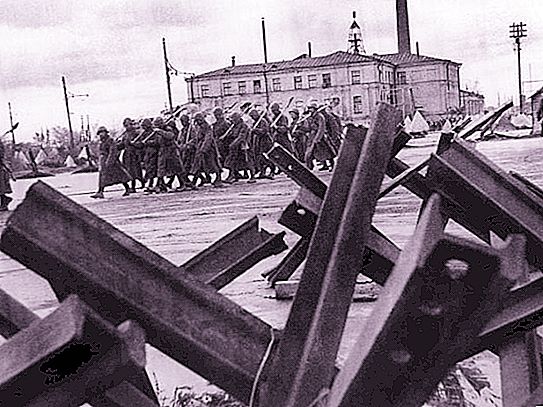
On the defense of Leningrad
In the defense of the city participated both soldiers and residents. They were ready to stand to death and fight to the last bullet for the freedom of Leningrad. A huge number of lives were claimed in these terrible battles. There are more than 573 mass graves in the Leningrad Region, and how many solitary and unknown graves! During the battles near Leningrad, more soldiers died than in England for all the years of the war. But none of the defenders even had the thought of handing over the city to the enemy.
Raising the topic of what it was necessary to give Leningrad to the Nazis and thereby save the lives of citizens and defenders, it is important to remember that Hitler wanted to wipe the city from the face of the earth, along with the entire population, so as not to feed the inhabitants in winter. The defenders of Leningrad and the inhabitants themselves perfectly understood this and were ready to resist to the last man. Mass graves in the Leningrad Region - the price paid by Soviet soldiers for peace and freedom on our land.
Sinyavinsky heights
The fighting near the small village of Sinyavino, Kirovsky district, became decisive during the defense of Leningrad. In battles, as in a meat grinder, the best German troops, specially sent to storm the city, were grinded, but many Soviet soldiers died in local swamps. Combat losses near Sinyavino - one of the largest in the Leningrad region. The list of the mass grave mentions 28, 959 people, of which 27, 878 are those whose names are known, and 1, 081 are unknown. In 1975, the Memorial to the Fallen was opened, which includes 64 marble slabs with the names of the dead soldiers.
Vyborg-Petrozavodsk operation
This offensive operation against the Finnish troops completed the Leningrad battle. Her goal was to defeat Finnish troops and withdraw Finland from the war. During the operation, Soviet troops liberated most of Karelia, created the conditions for Finland to leave the military campaign and eliminated the threat to Leningrad. During the fighting, more than 23 thousand Soviet soldiers died.
In the Vyborg district of the Leningrad region there are more than 100 mass graves.
The largest burial site is the Petrovka memorial. 5, 095 people were buried in mass graves, of which the names of 4, 279 fighters are known.
Leningrad Prokhorovka
In August 1941, a tank battle unfolded near Moloskovitsy, which became a real hell for fascist tankmen. After our troops lost one of the tank columns, they began to beat the enemy in an ambush. So, in the Kotino area, Soviet soldiers destroyed 14 enemy tanks, and under Vypolzovo, Corporal Dolgikh Nikolay, from an ambush with the help of a tower gun, knocked out 4 fascist tanks and destroyed several dozen soldiers.
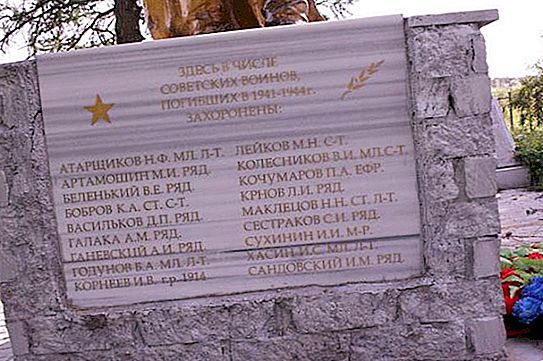
Knowing that Leningrad was behind them, Soviet tankmen fought to the last drop of blood. They burned alive in tanks, but did not retreat. At the beginning of the battle, there were 108 vehicles in the Soviet division, and almost all of them were burned in the attack.
In Moloskovitsy, Voloskovsky District, Leningrad Region, the remains of 19 people rest in mass graves. On the memorial plates are the names of 26 soldiers.
Military graves near Leningrad
The battle for Leningrad is one of the longest-lasting battles of the Great Patriotic War. There are a huge number of mass graves in the Leningrad Region. In almost every region of the region there is a memorial and military burial grounds, which are looked after by local residents. Until now, search teams have buried the remains of Soviet soldiers found in the Leningrad Region in mass graves. The names of the heroes who gave their lives for their homeland, unfortunately, are not always possible to establish. Many soldiers, from superstition, did not put on special capsules with their data before the battle. And in such cases, the data of the fighter is almost impossible to establish. Therefore, on the memorial plates of mass graves in the Leningrad Region, the names of the soldiers are not always indicated. Below is a list of military graves by region.
| District
Leningrad region |
Number of graves | Number of Buried |
|
Boksitogorsk |
16 | 2046 |
|
Volosovsky |
23 | 1526 |
|
Volkhovsky |
25 | 7209 |
|
Vsevolozhsky |
46 | 56170 |
|
Vyborg |
82 | 25471 |
|
Gatchinsky |
52 | 68100 |
|
Kingisepp |
66 | 9899 |
|
Kirish |
28 | 26810 |
|
Lodeynopolsky |
16 | 4176 |
|
Lomonosovsky |
18 | 8187 |
|
Luga |
45 | 8132 |
|
Podporozhsky |
16 |
3966 |
|
Slantsevsky |
18 |
8048 |
|
Tikhvin |
fifteen | 4431 |
|
Tosnensky |
26 | 31112 |
| Sosnovoborsky | 573 | 377 533 |
How to find your relative who died near Leningrad
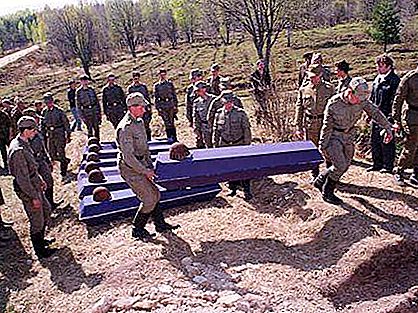
Not only native Leningraders fought for Leningrad. Many soldiers were from various cities of the USSR. And if the locals find the burial place easier, since they usually know where and how their soldiers died, and it is easier for them to go around the region in search of the necessary military burial, then for those whose relative was called up from another settlement, the search for the grave becomes a rather difficult task. Now the data on the dead and missing, records from medical journals about the nature of the wounds and the cause of death, as well as lists of those buried in mass graves are being made publicly available. In the Leningrad region, such data are also available, and they are constantly updated. If you know where a relative fought and died or went missing, you can contact the local administration to clarify information if there is none on special resources.


